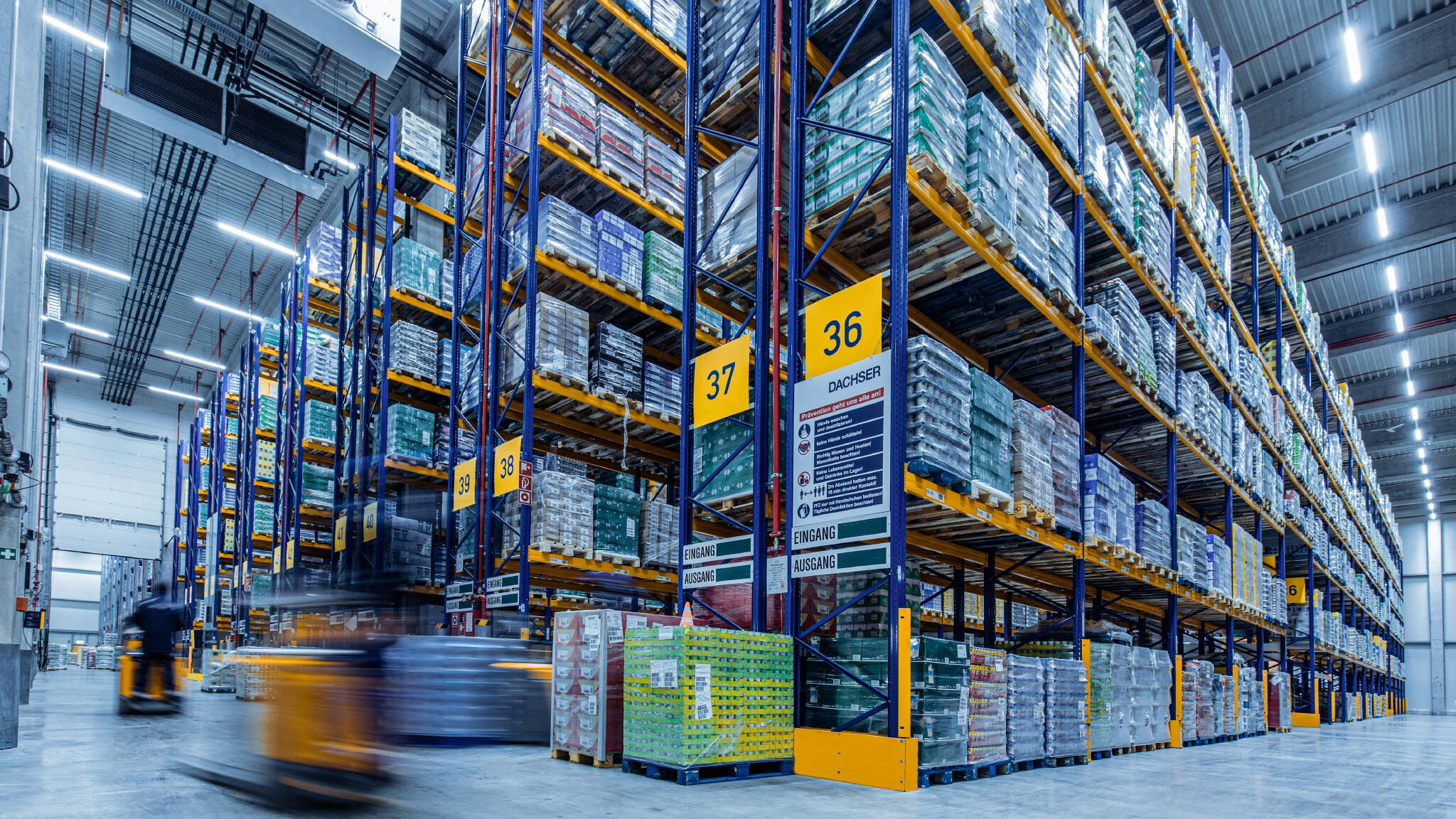Ready to turn insight into action?
We help organisations transform ideas into measurable results with strategies that work in the real world. Let’s talk about how we can solve your most complex supply chain challenges.

In today’s highly competitive retail landscape, supply chain design is a key differentiator for success. Retailers must carefully manage their supply chain infrastructure—from network design and warehouse layout to demand planning and replenishment technologies—to stay competitive, reduce costs, and meet customer expectations. With growing complexity in omnichannel retailing and increasing consumer demands for faster deliveries and personalised experiences, investing in a well-designed supply chain is no longer optional but essential.
Retailers in Australia and New Zealand, like their global counterparts, are feeling the pressure to optimise their supply chains. With fluctuating demand, rising operational costs, and the need for flexibility in fulfilment models, supply chain efficiency is critical for sustaining profitability. This article will explore the benefits of investing in network design, warehouse layout optimisation, demand planning, replenishment technologies, and Sales & Operations Planning (S&OP). We will also discuss how Trace Consultants can support retail organisations in Australia and New Zealand in developing robust, future-proof supply chains.
Why Supply Chain Design is Crucial in Retail
Retailers are navigating a landscape where customer expectations are continually evolving, competition is fierce, and external disruptions—such as supply chain shocks or environmental crises—can significantly impact operations. A well-designed supply chain enables retailers to meet these challenges by ensuring that their distribution networks, warehouses, and inventory systems are optimised for efficiency, flexibility, and resilience.
Supply chain design goes beyond the operational—it's about strategic alignment between business goals and the systems that move products from suppliers to customers. A carefully crafted supply chain can reduce costs, increase speed to market, and allow for agility when responding to shifts in demand or external pressures.
The key areas of focus for any retailer's supply chain design include network design, warehouse layout optimisation, demand planning, and replenishment, along with an integrated Sales & Operations Planning (S&OP) process. Let’s dive deeper into each of these areas and explore their benefits.
1. Retail Network Design: Optimising Distribution for Efficiency
Retail network design focuses on the physical flow of goods from suppliers through distribution centres (DCs) and fulfilment centres to retail stores or directly to consumers. Retailers must make decisions about the location and number of DCs, transportation routes, and where to stock inventory based on customer demand patterns.
Investing in network optimisation offers several benefits:
- Cost reduction: Strategic placement of DCs close to high-demand regions reduces transportation costs, delivery times, and carbon emissions.
- Improved customer service: With products stored closer to customers, retailers can offer faster delivery, boosting customer satisfaction and loyalty.
- Scalability and flexibility: A well-optimised network is flexible enough to scale with growth, accommodate new sales channels (e.g., omnichannel fulfilment), and respond to market shifts or supply chain disruptions.
Retailers adopting an omnichannel approach—where customers interact across online, in-store, and click-and-collect options—require a network design that seamlessly integrates all channels. By investing in network design, retailers ensure they can meet customer expectations, regardless of how or where the customer chooses to shop.
2. Warehouse Layout Optimisation: Enhancing Efficiency and Scalability
Warehousing is the backbone of the retail supply chain. A well-designed warehouse enables smooth, cost-effective operations that ensure products are stored, picked, packed, and shipped efficiently. As retail demand increases in complexity, warehouse design becomes crucial in keeping operations streamlined and scalable.
Warehouse layout optimisation focuses on the physical layout, design, and operational workflows within a warehouse to improve efficiency, reduce waste, and maximise productivity. Here's why investing in warehouse layout optimisation is critical:
- Space utilisation: An optimised warehouse layout maximises the use of available space, ensuring that storage capacity is fully utilised while leaving enough room for efficient product flow and equipment movement. This often involves implementing high-density storage solutions such as vertical racking systems, mezzanines, or automated storage solutions.
- Picking and packing efficiency: Warehouse picking and packing processes are where much of the cost and time are concentrated. Retailers can optimise this through thoughtful layout design—minimising walking time for pickers, implementing zone picking (where pickers focus on one section of the warehouse), or using automation such as robotic picking systems.
- Product placement: In an optimised warehouse, products are stored based on their velocity (sales rate). Fast-moving items are placed closer to the picking stations, reducing travel time and speeding up order fulfilment. Seasonal or high-turnover products are often placed in prime locations, while slower-moving items can be stored further back.
- Scalability: A well-designed warehouse layout allows for future growth. Retailers should consider their long-term storage needs, making room for additional stock or new product lines without having to invest in costly expansions or redesigns.
- Automation and technology: Automation plays a critical role in modern warehouse operations. Technologies such as automated guided vehicles (AGVs), automated storage and retrieval systems (AS/RS), and robotics can enhance picking and packing efficiency, reduce labour costs, and improve accuracy.
Example: A large e-commerce retailer might optimise its warehouse by using a combination of vertical storage systems and conveyor belts to reduce the time it takes to move products from storage to shipping areas. By introducing automation into their layout, the retailer can handle a higher volume of orders with fewer staff, cutting operational costs and improving throughput.
An optimised warehouse layout not only reduces costs but also improves the ability to meet customer demand more quickly and accurately. In retail, where speed to market is critical, a well-designed warehouse can provide a significant competitive advantage.
3. Demand Planning and Replenishment Technology: Ensuring Stock Availability
Demand planning and replenishment are crucial for maintaining the delicate balance between too much and too little inventory. Retailers need accurate demand forecasts to ensure that stock levels align with customer demand while avoiding costly overstocks or stockouts.
Advanced demand planning and replenishment technologies provide retailers with the tools to automate and optimise these processes. These technologies leverage data analytics, machine learning, and real-time market insights to predict future demand, allowing retailers to adjust inventory levels accordingly.
Benefits of investing in demand planning and replenishment technologies include:
- Increased forecasting accuracy: Modern demand planning tools incorporate factors such as sales history, seasonality, and market trends to produce more accurate forecasts. Machine learning algorithms continually improve these forecasts based on new data.
- Inventory optimisation: With more accurate forecasts, retailers can reduce excess stock while ensuring that popular items remain available. This reduces carrying costs and improves cash flow.
- Automated replenishment: Replenishment technologies automatically reorder products when inventory falls below a set threshold, minimising manual effort and ensuring consistent stock availability.
For omnichannel retailers, integrating demand planning with inventory management systems ensures that stock levels are coordinated across all channels—whether in-store, online, or in fulfilment centres. This enables retailers to provide a seamless shopping experience and avoid stockouts, especially during peak shopping periods or promotional events.
4. Sales and Operations Planning (S&OP): Aligning Supply with Demand
Sales and Operations Planning (S&OP) is a key process for aligning a retailer's supply chain activities with its overall business objectives. S&OP involves cross-functional collaboration between sales, marketing, finance, and supply chain teams to create an integrated plan that balances demand forecasts with supply capabilities.
Investing in S&OP processes enables retailers to synchronise their operations with real-time demand, improving decision-making and allowing the business to be more agile in responding to market changes.
Benefits of S&OP for retail organisations include:
- Improved alignment: S&OP ensures that demand forecasts are aligned with supply chain activities, helping to avoid overproduction or underproduction.
- Faster response to market changes: Retailers can quickly adjust their plans based on shifts in demand, new product launches, or promotional campaigns.
- Better decision-making: S&OP provides a structured process for evaluating trade-offs between different business functions, ensuring that supply chain decisions are aligned with financial and customer service goals.
By integrating S&OP into their supply chain strategy, retailers in Australia and New Zealand can improve the accuracy of their demand forecasts and better allocate resources to meet both short-term and long-term goals.
How Trace Consultants Can Help Retail Organisations in Australia and New Zealand
For retailers in Australia and New Zealand, developing a robust, efficient, and future-proof supply chain requires expert guidance. Trace Consultants has extensive experience in helping retail organisations optimise their supply chains through advanced strategies in network design, warehouse optimisation, demand planning, and S&OP.
Trace Consultants provides a range of services tailored to the unique needs of the retail industry, including:
- Retail Network Optimisation: Trace Consultants can assist retailers in strategically designing their distribution networks, ensuring that products are stored and delivered efficiently to meet customer demand while minimising costs.
- Warehouse Layout Optimisation: With expertise in warehouse design, Trace helps retailers optimise space utilisation, streamline picking and packing processes, and implement automation to drive operational efficiency and scalability.
- Demand Planning and Replenishment Solutions: Trace Consultants offer advanced tools and technologies to help retailers improve forecasting accuracy, optimise inventory levels, and automate replenishment to ensure stock availability across all channels.
- S&OP Integration: By implementing S&OP processes, Trace helps retailers align their supply chain operations with broader business objectives, enabling faster decision-making and improved demand-supply synchronisation.
Through their in-depth knowledge and proven track record, Trace Consultants empowers retail organisations to enhance their supply chain performance, reduce operational costs, and deliver a superior customer experience.
In today’s dynamic retail environment, supply chain design is crucial for maintaining competitiveness and profitability. Retailers who invest in optimising their network design, warehouse layout, demand planning, and S&OP processes will be better positioned to meet customer demands, reduce costs, and drive long-term growth.
By partnering with experts like Trace Consultants, retailers in Australia and New Zealand can ensure that their supply chains are built to withstand market fluctuations, embrace technological advancements, and remain agile in the face of future challenges.
Ready to turn insight into action?
We help organisations transform ideas into measurable results with strategies that work in the real world. Let’s talk about how we can solve your most complex supply chain challenges.








